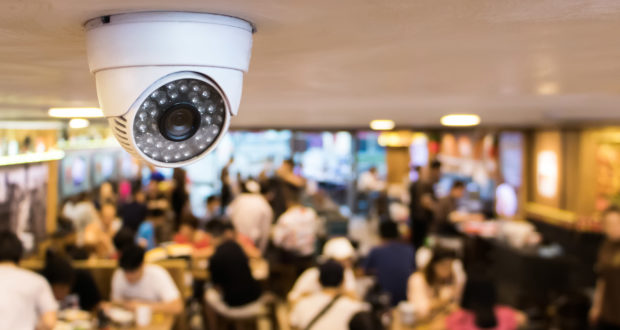A new project led by Edith Cowan University is investigating how CCTV could be used to improve the safety and wellbeing of residents in aged care homes.
A survey and interviews will canvas opinion from the public as well as residential aged care staff across Western Australia on whether security cameras are appropriate and necessary.
“We want to understand people’s concerns and opinions of surveillance in private or common areas in residential aged care,” the project’s lead researcher Dr Caroline Vafeas told Aged Care Insite.
At the moment CCTV is not widely adopted in the sector but there are growing community calls for cameras to monitor vulnerable residents - and not simply when an incident comes to light.
“You want to see whether that person in that single room is having interactions with carers during the day. You want to know how long the food has sat there. You want to know when falls happen and how long it takes someone to go in,” Dr Vafeas said.
It’s also about protecting staff. In the event of allegations of inappropriate treatment, there would be evidence, she adds.
Dr Vafeas says she’d love the project to eventually persuade aged care facilities to install security cameras.
“We’d love to look at the care before installation, care after installation and see if there’s an improvement,” Dr Vafeas said.
“But we can’t put cameras in until we have the opinion of those most affected.”
Fear of Big Brother
Not surprisingly, the loudest voice against the use of CCTV in aged care facilities comes from staff.
A previous ECU pilot study at one Perth aged care facility found that only 36 per cent of staff wanted CCTV used in public spaces, compared to 57 per cent of family members and 38 per cent of residents.
According to the study, just 14 per cent of staff wanted it used in bedrooms, as opposed to 48 per cent of families and 25 per cent of residents.
While CCTV can make staff members feel they’re being watched, Dr Vafeas says this isn’t the case.
“It’s not surveillance or Big Brother, it’s safeguarding,” she said. “It’s closing the gate before the horse bolts rather than the other way around.”
She believes it’s strange that society has accepted CCTV in public areas but feels uncomfortable monitoring our most vulnerable.
“Healthcare staff need to have a culture where this is the norm and this is acceptable.”
Diverse options
Erica* is able to jump on her phone or laptop to see her 86-year-old dad in his armchair at his Perth aged care home. She can even press a button to ask him how he is, and turn up the volume to hear how carers are speaking to him.
She decided to have CCTV installed in her father’s room 18 months ago following an incident in which he claimed he was “manhandled” back to bed one night while going to the toilet. Her father was supportive of the decision.
It’s just one of the ways in which CCTV cameras can be used in aged care. Some are triggered by movement, sound or light; others offer visuals but no audio. Even the recording function is optional.
Erica feels better knowing she can keep an eye on her dad, particularly because he is at high risk of falls.
“I think [CCTV] is brilliant,” she told Aged Care Insite. “The staff know it’s there and I think it acts as a deterrent. I think all aged care residents should have a camera in their room.”
Issues of consent
One of the murkiest areas of CCTV monitoring involves residents living with dementia or another cognitive impairment who are unable to give consent themselves.
The decision then falls to family members, which can be complicated.
Dementia Australia advises families and carers to discuss camera use with those living with dementia while they’re still able to understand the implications in order to create an advanced care plan.
“Ultimately, decisions regarding the use of CCTV camera use in aged care must consider the balance between protecting residents’ safety and protecting individuals’ rights to privacy and choice,” it says in a statement.
Royal Commission highlighted a need
Dr Vafeas says the Royal Commission into Aged Care Quality and Safety, which called out the neglect of elderly people, has only highlighted the need for CCTV.
“If people aren’t happy with the quality of care, they feel that they have a voice now,” she said.
In response to the commission’s recommendations, the federal government promised in this week’s budget to inject $17.7 billion into the sector over five years.
Along with strategies such as improved staffing levels and training, Dr Vafeas says CCTV is an inexpensive tool that will improve the quality and safety of aged care residents in the future.
“In 10 years' time we’ll just laugh that we were even talking about this.”
Find the survey here:
https://ecuau.qualtrics.com/jfe/form/SV_8796KQnT2OS7hs1
*not her real name
Do you have an idea for a story?Email [email protected]
 Aged Care Insite Australia's number one aged care news source
Aged Care Insite Australia's number one aged care news source

